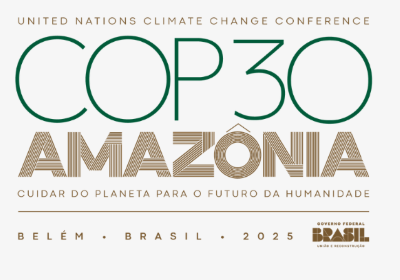UHY's Harriet Hodgson-Grove takes a look at what came out of the recent COP30 climate summit, particularly relating to the UN's Sustainable Development Goals, and what this could mean for charities as we head closer to 2030.

With the COP30 summit in Belem, Brazil now over, this feels like an appropriate moment to step back and consider what this landmark conference means for the charity and not-for-profit sector. Ten years on from the Paris Agreement, and with just five years remaining until the 2030 deadline for the Sustainable Development Goals (SDGs), the decisions emerging from this summit carry significant weight for organisations working across the social and environmental spectrum.
The big picture: where we stand
The backdrop to COP30 has been sobering. The 2025 UNEP Emissions Gap Report released on the eve of the conference confirmed that current national climate commitments put the world on track for 2.3-2.5°C of warming by century's end, well above the 1.5°C target. Meanwhile, the UN's Sustainable Development Goals Report published earlier this year delivered a stark assessment: only 35% of SDG targets are on track, nearly half are progressing too slowly, and 18% have regressed since 2015.
These numbers matter for charities regardless of your specific mission. Climate change acts as a threat multiplier, exacerbating poverty, displacement, health inequalities and food insecurity - the very issues many organisations in the sector exist to address.

What emerged from Belem
Brazil positioned COP30 as the moment to shift from negotiation to implementation. The conference's six thematic pillars - spanning energy, forests, agriculture, cities, human development and cross-cutting issues - reflected this emphasis on practical action rather than further pledges.
Negotiations centred on the ‘Mutirão’ decision, a package aiming to accelerate collective action, addressing four key areas: emissions-cutting ambition, national climate plans, finance and trade. On adaptation finance, proposals emerged to triple support for developing countries, recognising that the communities bearing the brunt of climate impacts need resources to build resilience. The Global Goal on Adaptation moved closer to agreement on indicators that will allow countries to measure and report their adaptation progress meaningfully.
For the first time, climate misinformation appeared on the formal COP agenda - a recognition that accurate information is itself a prerequisite for effective action.

What charities can do now
Even if climate isn't your primary focus, the frameworks emerging from COP30 and the broader SDG architecture are increasingly shaping the funding landscape, stakeholder expectations and collaborative opportunities available to charities.
The SDGs provide a practical framework for organisations of any size to align their work with global priorities. This isn't about adding climate programmes to your portfolio if that's not your expertise. It's about understanding how your existing mission connects to these broader goals and communicating that connection effectively. Below are five steps to get started.
- Map your mission to the SDGs
Identify which of the 17 goals align most closely with your charity's objectives. No organisation can meaningfully address all 17, so focus on those most central to your work. An education charity might focus primarily on SDG 4 (Quality Education) but could also contribute to SDG 5 (Gender Equality) if it works to improve access for girls, or SDG 10 (Reduced Inequalities) if it supports marginalised communities. Making these links explicit strengthens your case with funders and demonstrates strategic awareness. You can read more about how charities can utilise the SDG's as a useful guide here.
- Gather evidence and tell your story
Collect both quantitative data and qualitative stories that demonstrate how your work contributes to your chosen goals. The SDGs offer a useful framework for bringing your impact to life, showing funders and supporters that you're thinking long-term and measuring what matters. Whether through annual reports, website content or stakeholder communications, the SDGs can help you tell a more powerful and lasting story.
- Consider negative impacts honestly
This is often overlooked but increasingly expected. Ask hard questions about where your operations may conflict with other SDGs - perhaps your programmes deliver social good but your travel or supply chain creates environmental costs. The new Charities SORP places greater emphasis on sustainability reporting, encouraging trustees to explain how the charity is responding to environmental, governance and social matters. Being transparent about challenges as well as achievements builds trust and credibility.
- Review your own operations
Simple steps - renewable energy procurement, reducing waste, sustainable travel policies, ethical investment of reserves - align with SDGs 12 (Responsible Consumption) and 13 (Climate Action) and demonstrate organisational commitment beyond programme delivery. Understanding your current position is an essential first step, allowing you to identify areas of strength and prioritise those requiring attention.
- Set future intentions and commit to continuous improvement
Don't just report on the past year; explain how you plan to deepen positive contributions and mitigate negatives. Sustainability reporting is not about perfection but about progress. The SDGs encourage a commitment to continuous improvement, with regular assessment helping you track change, refresh choices and demonstrate accountability over time.

Looking forward
With five years until the 2030 SDGs deadline, the next period is critical. The SDGs may not all be achieved by their target date, but they remain the most comprehensive framework we have for addressing interconnected global challenges. Charities are uniquely positioned to drive progress at community level, to advocate for change and to hold other actors accountable.
The message from Belem is clear: the time for implementation is now. For the charity sector, that means understanding where we fit within these global frameworks, communicating our contribution clearly, and seeking the partnerships that will amplify our impact. The stakes - for the communities we serve and for the planet we share - could not be higher.
To discover more about UHY's sustainable business services, please get in touch with Harriet Hodgson-Grove, Head of Sustainability Services at UHY.